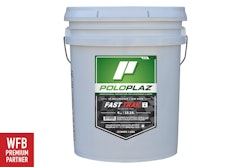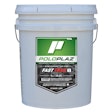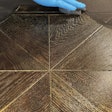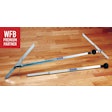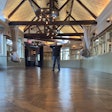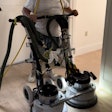Getting Repairs Right
I am having difficulties getting my finishes to blend in when doing repairs. How can I make sure my repairs blend?
Brett Miller, Rocky Mountain regional manager at Basic Coatings, answers:
When doing a repair, there a few things you can do to ensure success:
First, I recommend duplicating the original sanding sequence. If you sanded with 50- and 80-grit paper and finished sanding with a 100-grit screen, duplicate this on the repair.
Second, follow the exact finish sequence you used on the original job. Don't think you can get the same results by just laying down one real thick coat instead of the three you applied before. On the final coat of finish, you can often thin down the finish and apply multiple coats in order to slowly get back to the same film build and sheen level. With waterborne finish, I used to water down my finish to apply super-thin coats, then speed-dry them with a heat gun (or my wife's blow dryer). This may take extra time, but it beats making another trip. Know your finish and whether it can be thinned down like this.
Also, make sure your finish is properly mixed. Matting agents tend to settle near the bottom of the finish container, and if you are pouring finish for a repair without mixing, you will undoubtedly get a higher sheen on your repair area. Conversely, if you're near the end of a container that's been sitting in your van for some time, you may have more matting agents, causing a lower sheen level.
Last, after getting the proper build, blend your repair into a larger area, slightly feathering out the edges into the field. You can also tape off boards to isolate repairs. Finishes take some time to off-gas and cure, which may cause a repaired area to appear slightly different for a short period of time. Achieving an identical sheen level on a repair may be impossible sometimes, and to make customers happy, on some jobs you may have to simply recoat an entire area.
Flying Solo
I have a customer who bought a factory-finished engineered wood floor and wants me to install it. It's a brand I'm unfamiliar with, and for installation instructions, all I have is a phone number that turned out to be the NWFA. Can you tell me how to install it?
Rusty Swindoll, technical services manager at the National Wood Flooring Association, answers:
No, we can't. The NWFA has basic installation instructions about how to snap lines and things like that, but we can't tell you how to install a certain manufacturer's product (the exceptions are companies that have hired NWFA Services Inc. to handle questions based on the specific instructions for their products). Unfortunately, we are getting more phone calls like yours, where manufacturers aren't including any instructions or warranties for their products.
When purchasing factory-finished engineered wood flooring, be sure the manufacturer has installation instructions, if not in the box then at least online. You need to know: What type of adhesive or nailer should you use? If it's a floating floor, what underlayment do you need? Do you need an adhesive for the tongue and groove? Try to talk to someone at the manufacturer, distributor or retailer before you buy to ask about the warranty and installation instructions. Better to ask now so you aren't disappointed later.
Right now you need to decide if you want to take total responsibility for that floor. In my contracting days, I did do a few jobs where the customer bought the flooring and I had no instructions. In those cases the flooring was something that I was very familiar with, and I felt comfortable that it would work. But, I knew that if something went wrong with the job, I was on my own.
Is It Real?
My customer is convinced that 3?4-inch solid wood floor is the only thing he will consider because he says it's "real wood." I think his situation, however, requires an engineered floor. How can I help him understand?
Tony Miraldi, director of technical services at Somerset, Ky.-based Somerset Hardwood Flooring, answers:
The customer who rejects engineered flooring as not "real wood" might be asked: "When was the last time homes were built (at least in the U.S.) with no engineered wood components? That means no plywood or OSB sheathing, no trusses, laminated joists, or LVL beams, and no engineered window, door, or cabinet components, etc. The answer is: "Not in a long time," and for good reason. Often the same customer who rejects engineered hardwood flooring is proud of a plywood subfloor, as they believe the plywood to be superior to other systems.
Engineered materials were created to solve problems, and engineered hardwood flooring is no exception. Dimensional stability, needing to install over any subfloor type, and height/transition issues are a few of the common problems engineered flooring helps solve. Many engineered products can be sanded and finished, and almost all are re-coatable. Most engineered floors are factory-finished, but unfinished options are also available.
You can also let your customers know that engineered flooring is very "green." Even thicker dry-sawn wear layer engineered floors can stretch the yield of our resources.















